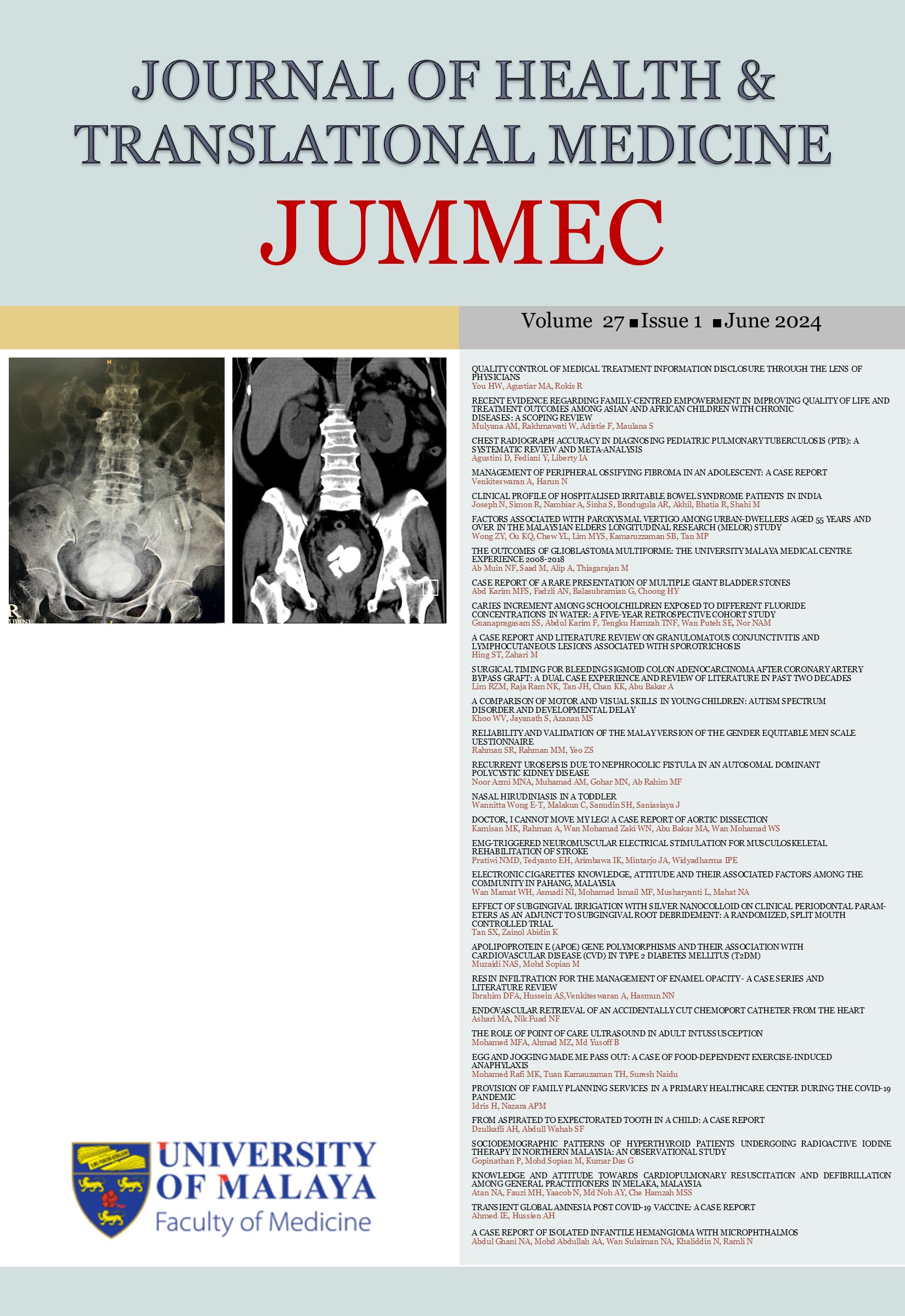CARIES INCREMENT AMONG SCHOOLCHILDREN EXPOSED TO DIFFERENT FLUORIDE CONCENTRATIONS IN WATER: A FIVE-YEAR RETROSPECTIVE COHORT STUDY
Received 2023-05-16; Accepted 2023-08-17; Published 2024-01-02
DOI:
https://doi.org/10.22452/jummec.vol27no1.9Abstract
Previous studies have indicated that the cessation of community water fluoridation (CWF) leads to an increase in caries prevalence among schoolchildren. However, little is known about the rate of caries progression among schoolchildren exposed to different concentrations of fluoride in water. Hence, this study aimed to compare the mean caries increment in permanent dentition among Malaysian schoolchildren with partial exposure (in Pahang) and full exposure (in Perak) to CWF and determine its associated factors. This was a five-year retrospective cohort study using an analysis of secondary data of school dental records among schoolchildren exposed to different fluoride concentrations in the water supply. Children in Perak were exposed to CWF throughout life while children in Pahang were exposed to CWF for the first five to six years of their lives before it was discontinued. The children
were followed retrospectively from 2015 (initially aged eight years old) to 2019 (12 years old). Relevant data such as demographic characteristics, caries experience and exposure to other clinical preventive dental treatments were extracted and analysed using SPSS 21.0. Descriptive, independent t-test and negative binomial regression were used to examine the data. The sample consisted of 462 school dental records in both states. The prevalence of schoolchildren with DMFT scores of 2 and ≥ 3 increased by 10.4% and 13.9%, respectively, in Pahang from 2015 to 2019, compared to 4.8% and 0.9% in Perak. The mean (M) and standard deviation (SD) of caries increment at tooth and surface levels in permanent dentition among schoolchildren in Pahang (M = 0.83, SD = ±1.50 and M = 1.00, SD =
±2.10) was significantly greater (p < 0.001) compared to Perak (M = 0.18, SD = ±0.53 and M = 0.22, SD = ±0.66) over the same period. After controlling for confounders, partial exposure to CWF remained a strong predictor for mean caries increment over a five-year study period. This study showed greater mean caries increment in permanent dentition among schoolchildren in Pahang after CWF ceased. Hence, the findings from this study could be used to assist policy makers to support reimplementation and continuation of CWF in Malaysia.
Downloads
Downloads
Published
Issue
Section
License
All authors agree that the article, if editorially accepted for publication, shall be licensed under the Creative Commons Attribution License 4.0 to allow others to freely access, copy and use research provided the author is correctly attributed, unless otherwise stated. All articles are available online without charge or other barriers to access. However, anyone wishing to reproduce large quantities of an article (250+) should inform the publisher. Any opinion expressed in the articles are those of the authors and do not reflect that of the University of Malaya, 50603 Kuala Lumpur, Malaysia.


